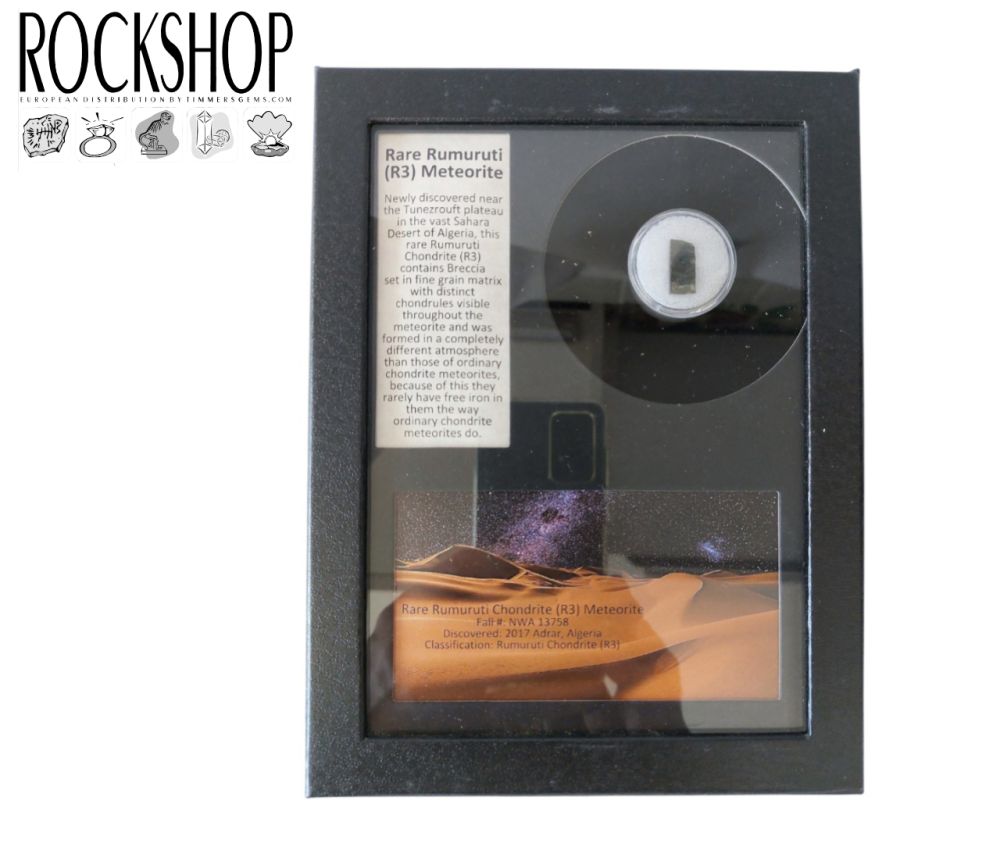We use cookies to make your experience better.
TimmersGems has a new website, existing customers also need to register again.
Original piece of "Rumuruti" meteorite, in luxury case with authenticity guarantee certificate (Found in 2017 in Algeria)
In addition to beautiful statement pieces, you will also find several display cases with special small fossils and crystals in the mineralium.
Availability:
In stock
SKU
122188
A meteorite is the part of a meteoroid that impacts Earth after falling from space through the atmosphere. During its journey through the atmosphere, the material is slowed down considerably and becomes very hot; this can be considered a meteor. A meteorite is essentially debris from space. The composition of meteorites can sometimes be used to determine their origin. For example, more than twenty have already been found that originate from the moon. This concerns material that was knocked loose from the moon by another meteorite. Meteorites such as ALH84001 have also been found, which originate from Mars. In many cases, however, the meteorite originates from the asteroid belt (also called the asteroid belt) between Mars and Jupiter. Whether there are also meteorites with a cometary origin is still under discussion. It is possible that some rare, very fragile types of carbonaceous meteorites originate from short-period comets. Much of the debris that comes into contact with the atmosphere does not reach the earth but burns up due to the resistance of the atmosphere. The fragments that burn up are visible at night as meteors, also called star showers or falling stars. In the case of larger pieces that do not burn up completely but fall to earth partially as a meteorite, a bolide (fireball) is created when passing through the atmosphere. The bolide of the Sikhote-Alin, for instance, demonstrates the impressive nature of this phenomenon. That was obviously visible in full daylight. The fireball caused by the Dutch Glanerbrug meteorite from April 1990 was visible just before sunset.
| Dimensions | Divers |
|---|---|
| Country of Manufacture | United States |












